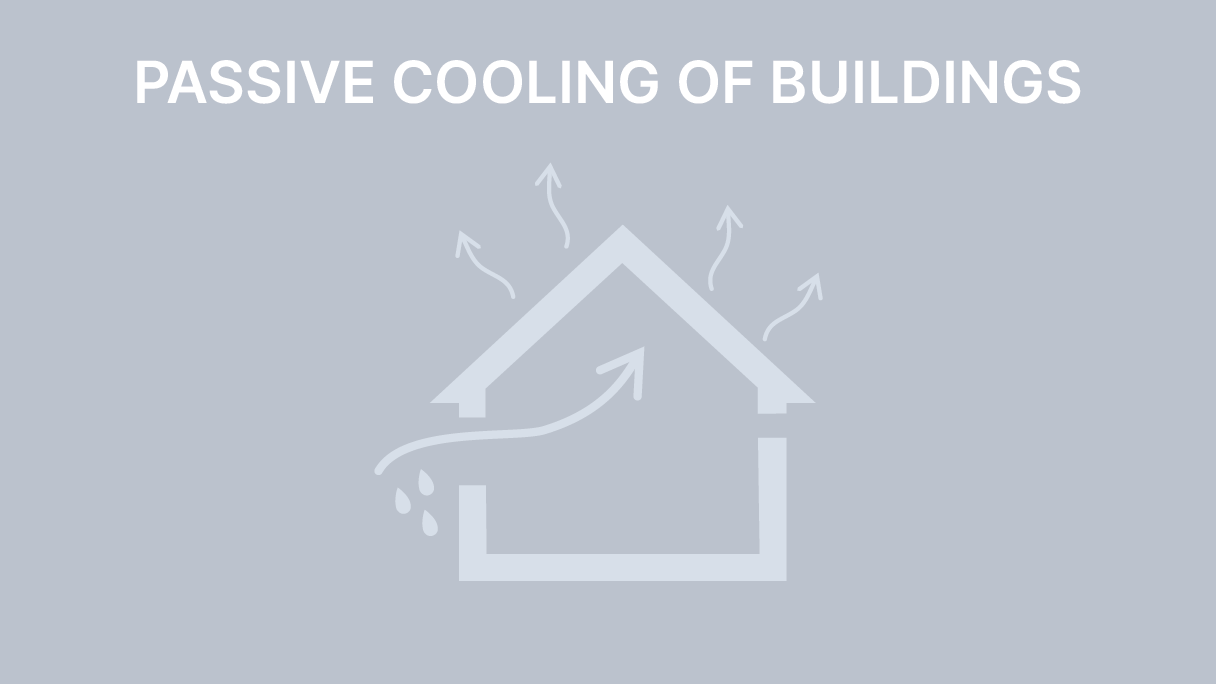Passive Cooling of Buildings
PASSIVE RESILIENCE
Recorded by Sofie Pelsmakers, images by Essi Nisonen and Veera Saastamoinen
KEY READINGS
Brian Ford, Juan A. Vallejo, and Rosa Schiano-Phan. The Architecture of Natural Cooling. Taylor and Francis
Gething, B., Puckett, K., Design for Climate Change, RIBA
Lechner, Norbert, and C. Wallace. Heating, Cooling, Lighting : Sustainable Design Methods for Architects. Fourth edition. Hoboken, New Jersey: Wiley
Pelsmakers, S., Donovan, E., Hoggard, A., Kozminska, U., Designing for the climate emergency, a Guide for Architecture Students, RIBA
Pelsmakers, S., The Environmental Design Pocketbook, RIBA
Huw Heywood, 101 Rules of Thumb for Low Energy Architecture, RIBA
Cooling buildings sustainably in Europe: https://www.eea.europa.eu/publications/cooling-buildings-sustainably-in-europe
Kimpian, J., Hartman, H., Pelsmakers, S. Energy, People Buildings: Making Sustainable Architecture Work, RIBA
Yearly and seasonal wind direction checker, for example: www.windfinder.com
Solar angle (altitude and azimuth) calculation tool, for example: www.suncalc.org
INSPIRATIONAL BUILT EXAMPLES
HHS architects/Jourda and Gilles Perraudin, Mont-Cenis Academy, Herne, Germany
Joao Filgueiras Lima, Sarah Kubitschek Hospital, Salvador, Brazil
Kamal el-Kafrawi, windcatchers in University of Qatar, Doha, Qatar
Laurie Baker – Centre for Development Studies, Thiruvananthapuram, India
Haworth Tompkins, Everyman Theatre, Liverpool, UK
Utzon, Can Lis, Majorca, Spain
Francis Kere, Gando Primary School, Boulgou Province, Burkina Faso
The Vauban, Freiburg, Germany
Architype Architects – The Enterprise Centre, Norwich, UK
Mike Reynolds, Earthships, New Mexico, USA
Studio Bark, Nest House, UK
Hassan Fathy, the house of Muhib Ad-Din Ash-Shāf’ȋ Al-Muwaqqȋ, Egypt
Geoffrey Bawa, Ena de Silva House, Colombo, Sri Lanka
Charles Correa, Tube Housing, Ahmedabad, India
Bearth and Deplazes, Vineyard Gantenbein, Switzerland
PASSIVE COOLING OF BUILDINGS
You must always prioritise passive cooling strategies before considering active cooling. Key passive cooling strategies that you should include in your project at the building scale:
• Ensure all sources of overheating are tackled first and risks minimised.
• Green and blue infrastructure at different scales.
• Social infrastructure and provision of ‘cool zones’.
• Reducing internal heat gains and understanding occupant behaviour.
• Building design that reduces the need for cooling through greenery, efficient fabric, reflective surfaces, solar shading, purge ventilation, self-shaded built form and courtyards, thermal mass and careful window design.
Ensure climate justice as part of any passive and active cooling approach: everyone has the right to access cool spaces in summer.

